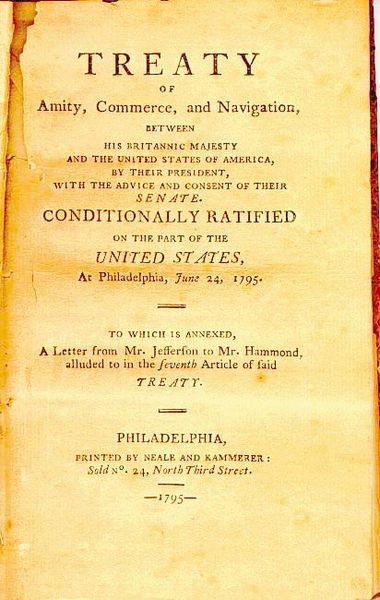In the history of United States foreign policy, the Roosevelt Corollary was an addition to the Monroe Doctrine articulated by President Theodore Roosevelt in his State of the Union address in 1904, largely as a consequence of the Venezuelan crisis of 1902–1903. The corollary states that the United States could intervene in the internal affairs of Latin American countries if they committed flagrant wrongdoings that "loosened the ties of civilized society".
Political cartoon depicting Theodore Roosevelt using the Monroe Doctrine to keep European powers out of the Dominican Republic.
History of United States foreign policy
History of United States foreign policy is a brief overview of major trends regarding the foreign policy of the United States from the American Revolution to the present. The major themes are becoming an "Empire of Liberty", promoting democracy, expanding across the continent, supporting liberal internationalism, contesting World Wars and the Cold War, fighting international terrorism, developing the Third World, and building a strong world economy with low tariffs.
The Jay Treaty of 1795 aligned the U.S. more with Britain and less with France, leading to political polarization at home
Thomas Jefferson imagined the United States as the force behind an "Empire of Liberty" that would promote republicanism
USS Constitution surprised analysts with an important victory over HMS Guerriere in 1812.
After 1832 it provided English readers with in-depth coverage of China.





